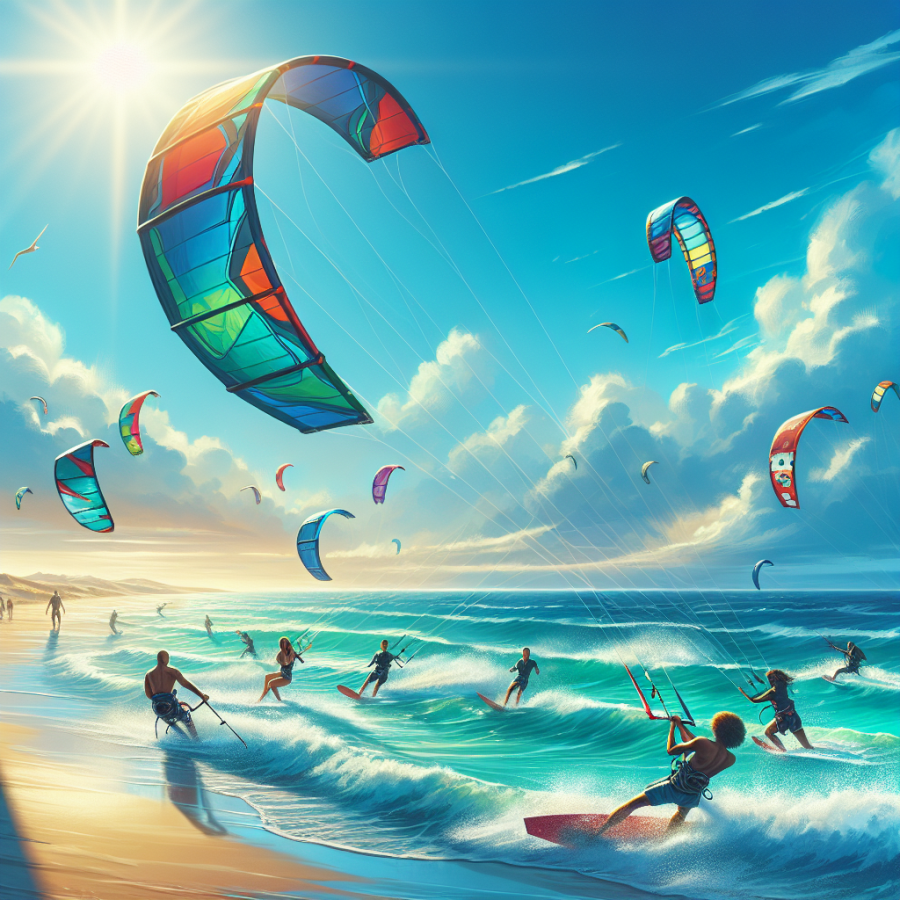Techniques and Technologies Fueling the Evolution of Kite Sports
Kite sports have come a long way since the traditional kite flying practices of the past. Today, they encompass a variety of high-adrenaline activities such as kitesurfing, kiteboarding, and snow kiting. These activities demand not only skill and courage from the participants but also rely heavily on advances in techniques and technologies to improve performance, safety, and accessibility.
One of the significant technological advancements in kite sports is the development of advanced materials. Modern kites are often made from high-strength, lightweight fabrics such as ripstop nylon or polyester, with reinforcements at stress points to withstand the forces they're subjected to while in flight. Carbon fiber and high-tensile composites form the structure of the kites, providing strength and flexibility while keeping the overall weight to a minimum.
The design of kites has also evolved immensely with the implementation of computer-aided design (CAD) software that has allowed for precise aerodynamic modelling. This has resulted in kites with improved flight characteristics such as better stability, enhanced control, and greater lift. As a result, kites are now more efficient, enabling athletes to perform a variety of complex moves and tricks with increased safety.
Harness systems have seen improvements as well, focusing on ergonomics and user comfort without compromising on safety. Modern harnesses distribute force evenly across the rider's body, reducing fatigue and the risk of injury. Quick-release mechanisms have become a standard feature, allowing the kite to be detached quickly in an emergency.
Another area of evolution in kite sports is the use of GPS and sensor-based systems that help riders better understand their performance metrics, such as speed, distance, and jump height. These devices offer real-time feedback that helps athletes refine their techniques and compete more effectively.
In terms of kiting techniques, there has been a significant shift towards multidisciplinary approaches: participants are increasingly cross-training in different kite sports, which advances their overall skill set. Additionally, athletes are combining techniques from traditional sailing and windsurfing to enhance their control and maneuverability while kitesurfing or doing kiteboarding.
Instruction and training methods have also benefitted from virtual reality simulators, allowing beginners to practice and experience kite sports in a risk-free virtual environment before heading out to the water or snow. Likewise, the popularity of online tutorial videos has provided enthusiasts across the globe with access to high-level coaching and advice.
Read also:
Mastering the Art of Powerful Kicks in Kickboxing
Exploring the Dynamic Range of Kite-Powered Activities
Kite sports represent a fascinating realm where the power of the wind is harnessed through a variety of flying contraptions, ranging from traditional single-line kites to more complex multi-line designs capable of astonishing acrobatic stunts. With the advent of modern materials and a deeper understanding of aerodynamics, kite-powered activities have expanded into a dynamic range of sports and recreational activities that offer excitement to people of all ages and skill levels.
One of the most visually captivating displays of kite mastery is stunt kite flying, also known as sport kite flying. Stunt kites are typically controlled by two or more lines, allowing the pilot to carry out intricate maneuvers and patterns in the sky. Enthusiasts gather at festivals to choreograph routines to music, with synchronized flying teams creating aerial ballets that mesmerize crowds.
For those seeking an adrenaline rush, kitesurfing combines the aerial capabilities of a large controllable kite with the aquatic challenge of surfing. Riders strap their feet onto boards and harness themselves to large kites which then propel them across the water at high speeds, allowing for spectacular jumps and tricks. Kitesurfing requires a blend of balance, strength, and an understanding of wind and waves, which makes mastering it both challenging and rewarding.
Another exhilarating kite-powered sport is landboarding, which merges elements of kite flying with off-road skateboarding. Participants use a four-wheeled board, similar to a skateboard but designed for all-terrain use, and a kite to traverse beaches, parks, and open fields. It's an accessible activity that ranges from simple cruising to performing gravity-defying jumps and tricks.
Snowkiting opens up the winter landscape to adventurers by using a kite to glide across snow and ice. It’s akin to kitesurfing but on a frozen playground. Snowkiters can traverse frozen lakes, ascend mountains without a lift, and enjoy both the ride up and the exhilarating descent. It's a sport that allows for exploration of remote snowy terrains in a way that very few other winter sports can.
Kite buggying is yet another pastime where a three-wheeled cart is powered by a kite, allowing for high-speed travel across flat surfaces like sand and grass. It's a seated activity, which makes it more accessible for those who might find standing sports physically demanding. The speed and agility of kite buggies make them appealing for racing competitions, where precision and control are essential.




